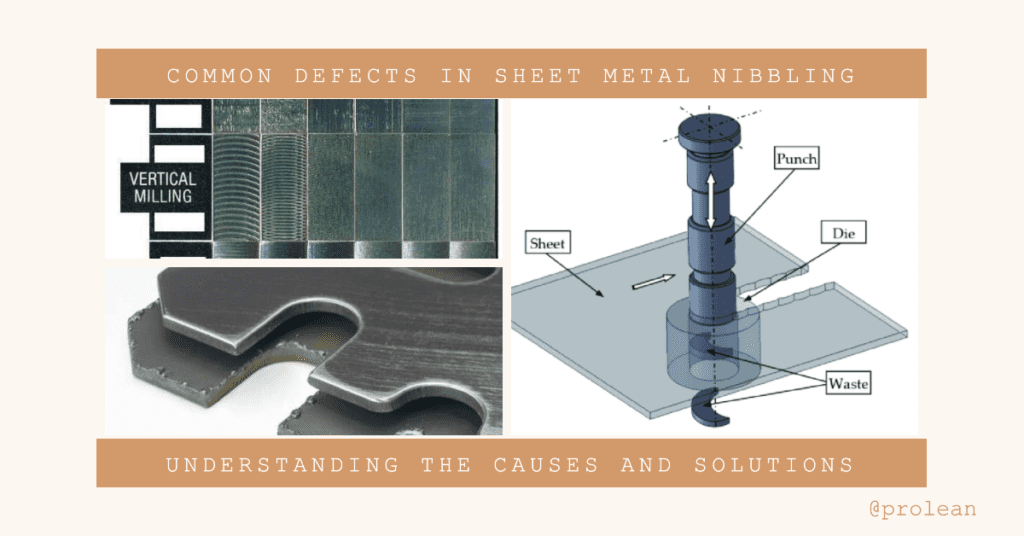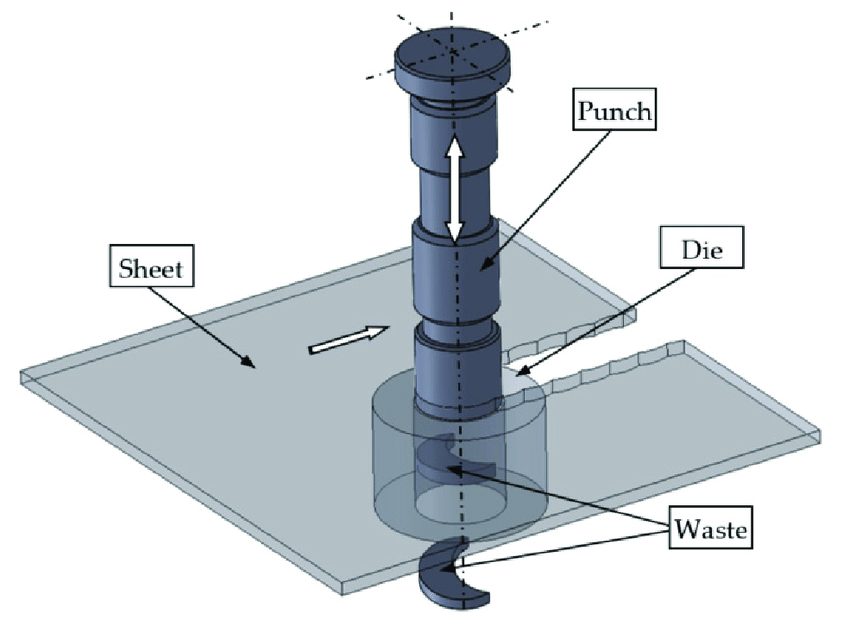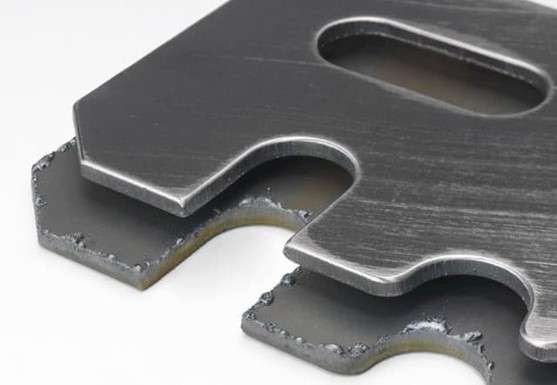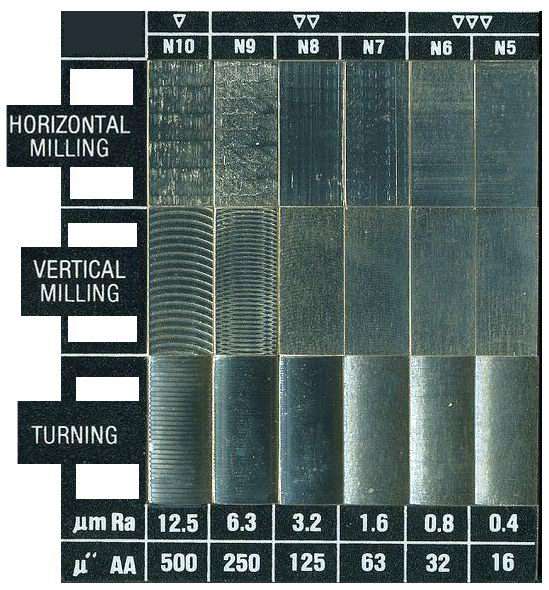
The nibbling process, a fundamental aspect of sheet metal manufacturing, is known for its ability to create complex shapes and designs. However, like all manufacturing processes, it is not without its own set of challenges. Certain defects can disrupt the process, affecting the final product’s quality.
This article aims to illuminate these defects, their causes, and how to mitigate them, using insights from Prolean’s sheet metal manufacturing services.
Exploring the Nibbling Process

What is the nibbling process? It is a sheet metal cutting operation employing overlapping punches to create the desired design. This technique generates intricate shapes with high precision, particularly those that aren’t achievable using standard cutting tools.
This operation leverages a nibbling machine equipped with a punch that moves up and down. As the sheet metal advances through the machine, the punch makes minor cuts or nibbles, leading to a final product with accurate and detailed cuts. This precision is one reason why the nibbling process is preferred for complex design executions in various industries, such as aerospace, automotive, and electronics.
Differentiating Between Punching and Nibbling
While both nibbling and punching are sheet metal cutting processes, the distinguishing factor lies in the extent and purpose of their operations. Punching is primarily used for creating holes in the sheet metal, while nibbling is employed when intricate cuts, notches, or shapes need to be formed on the sheet. Hence, nibbling allows for more detailed work, highlighting its importance in precision-based industries.
Common Machining Defects in the Sheet Metal Nibbling Process
Despite its benefits, the nibbling process can present specific challenges in the form of defects. Let’s explore some of the common machining defects that might occur during this process:
1. Burrs
These are small, rough projections that form at the edges of the metal sheet post-nibbling. Burrs may lead to issues in the later stages of manufacturing and could potentially injure operators handling the metal sheets.
2. Dimensional Inaccuracies
Another issue to watch out for is dimensional inaccuracies. If the nibbling machine isn’t correctly calibrated or if there’s an error in setting the sheet metal, it could lead to inaccuracies in the final dimensions of the cut pieces. This can be a significant problem, as even minor deviations can impact the overall quality and functionality of the final product.
3. Deformations
Deformations are another potential problem with nibbling machines. Excessive pressure or incorrect tooling may result in deformations, which can significantly impact the final product’s structural integrity. It’s important to carefully monitor the machine and adjust as needed to avoid this issue.
4. Surface Roughness

Finally, surface roughness is another issue that can arise during nibbling. This refers to an uneven finish on the surface of the cut pieces, which can affect the aesthetics and function of the final product. To avoid this problem, it’s essential to ensure that the machine is calibrated correctly and that the appropriate tooling is used for the job at hand.
Common Defects in Nibbling – A Table Representation
| Defect | Description |
|---|---|
| Burrs | Small, rough projections on the metal edges |
| Dimensional Inaccuracies | Deviation in the final dimensions from the desired specifications |
| Deformations | Distortion in the shape or structure of the metal sheet |
| Surface Roughness | The uneven finish on the surface of the cut pieces |
By understanding these common defects in the sheet metal nibbling process, manufacturers can devise effective strategies to mitigate their occurrence, ensuring the quality and precision of the final product.
Try Prolean Now!
Root Causes of These Defects
Understanding the origin of defects is paramount to their prevention. Here are some of the main causes behind the common defects in the nibbling process:
- Inappropriate Tool Selection
Choosing the wrong punch size, shape, or material can lead to defects like burrs, dimensional inaccuracies, and surface roughness. It’s essential to consider various factors when selecting the tool, including the hardness and thickness of the sheet metal and the complexity of the design. Evaluating all of these factors carefully will help ensure that the right tool is selected for the job, resulting in a higher-quality final product.
- Inadequate Machine Calibration
The nibbling machine needs to be precisely calibrated to ensure the accuracy and consistency of the cuts. This calibration process should be done regularly to ensure the machine operates at peak performance. It’s important to note that an incorrectly calibrated machine could lead to dimensional inaccuracies and deformations, which can ultimately impact the quality of the final product. Regularly calibrating the machine can help mitigate this risk and ensure that the final product meets the desired specifications.
- Excessive Pressure
Applying too much pressure during the nibbling process could deform the sheet metal, affecting the quality of the final product. It’s important to find the right balance between applying enough pressure to make a clean cut and not applying too much pressure that could cause the sheet metal to become deformed. This is another area where taking the time to carefully evaluate the factors involved in the process, such as the thickness and hardness of the sheet metal, can help ensure that the appropriate pressure is applied.
- Incorrect Material Placement
If the sheet metal isn’t correctly placed on the machine, it could result in inaccuracies in the final cut pieces. It’s important to carefully evaluate the placement of the sheet metal to ensure that it’s correctly positioned and secured on the machine. This can help reduce the risk of inaccuracies and ensure that the final product meets the desired specifications. Additionally, taking the time to align the material properly can help ensure that the cuts are made in the correct location, helping to reduce waste and improve overall efficiency.
Mitigating Measures for Nibbling Defects
1. Implementing Preventive Strategies
Addressing the root causes of defects is the first step towards their mitigation. Here are some measures to counteract the common nibbling defects:
- Tool Selection: Select the right punch for the job, considering the sheet’s material and the design’s complexity. This can help reduce burrs and surface roughness.
- Machine Calibration: Ensure that the nibbling machine is calibrated before the operation to prevent dimensional inaccuracies and deformations.
- Pressure Adjustment: Regulate the pressure applied during the nibbling process to avoid deforming the sheet metal.
- Material Placement: Verify the correct placement of the sheet metal on the machine to ensure precision in the final cut pieces.
2. Mitigating Measures for Nibbling Defects – Bullet Point Summary
- Correct tool selection
- Accurate machine calibration
- Appropriate pressure adjustment
- Correct material placement
Understanding the causes of these defects and implementing preventive measures is key to maintaining the integrity of the nibbling process and achieving superior-quality products.
Conclusion
Sheet metal manufacturing often relies on the nibbling process due to its versatility and efficiency. However, like any manufacturing process, it is not immune to defects. By understanding the root causes of common nibbling defects, such as inappropriate tool selection, inaccurate machine calibration, excessive pressure, and incorrect material placement, we can devise effective mitigation strategies. Implementing these preventive measures not only safeguards the integrity of the process but also ensures the production of superior-quality products.
At Prolean, we offer Sheet Metal Manufacturing Services that leverage our industry expertise and advanced technology to minimize defects and maximize production efficiency.
FAQs
What are the most common defects in the sheet metal nibbling process?
The most common defects include burrs, dimensional inaccuracies, deformations, and surface roughness. These defects can be attributed to a variety of factors, such as the selection of inappropriate tools, inadequate machine calibration, excessive pressure, and incorrect material placement.
What measures can be taken to mitigate nibbling defects?
Mitigation measures include the correct selection of tools, accurate machine calibration, appropriate pressure regulation, and proper placement of the material on the machine. By understanding and addressing the root causes of these defects, the quality of the final product can be significantly improved.
What is the role of machine calibration in the nibbling process?
Machine calibration is vital in the nibbling process. It ensures the accuracy and consistency of the cuts, thereby preventing dimensional inaccuracies and deformations. A properly calibrated machine can improve the overall quality of the final product.
Why is the selection of the correct tool important in the nibbling process?
The selection of the correct tool is essential in the nibbling process because it directly impacts the quality of the final product. The right tool, chosen based on the material of the sheet and the complexity of the design, can help reduce defects like burrs and surface roughness.
Can excessive pressure during the nibbling process cause defects?
Yes, excessive pressure during the nibbling process can cause defects. It can deform the sheet metal, leading to a compromised final product. Pressure during the nibbling process must be carefully regulated to avoid such issues.




0 Comments